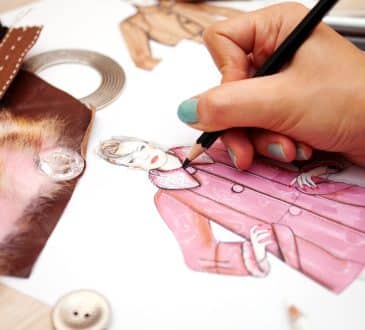How to Get All Your Offices Moving in the Same Direction

I started racing small sailboats when I was 10 years old. Peter was my captain and my idol. Whatever he said, I did. He shouted, “Tack!” I had the lines in my hand and rolled to the leeward side of the boat. He said, “Gybe,” and I ducked under the boom to initiate the turn.
By the time our season came to an end, we could anticipate each other’s next move and collaborate when the unexpected occurred. Both are critical components to racing small boats. They lose speed quickly, and a large lead can dwindle just as fast.
At the end of the season, I was assigned a new captain, but there was friction between us. Teaching style, tone, and receptivity were all part of the problem, and we could barely get the boat to move forward. I couldn’t internalize his direction, and he couldn’t understand my suggestions. Despite a healthy breeze, we were lost in the doldrums.
These experiences taught me a great deal about team cohesion, and I’ve carried these lessons with me into the design firm I now lead. You see, whether I’m sailing or creating a great user experience, I need to make sure I’m connecting my clients, community, and team to create cohesion. The only question that remains is “How do we achieve such connectivity?”
Working Together in the Right Ways
A cohesive team requires more than just a shared perspective. It requires a dynamic, evolving model of communication and collaboration that helps us all find the rhythm and flow in our work and lives.
Geographic boundaries are melting away as communication bandwidth increases, giving rise to a new kind of working relationship. And this only complicates the situation. The gig economy isn’t the answer, but dedicated teams within physical offices are outmoded as well. Workers know they don’t have to be physically co-located, but there are times they want to be.
The secret to building cohesion is understanding what your team needs, when it needs it, and how to act on it.
For example, our firm is spread across three different offices in Los Angeles, Austin, and Chicago. We’ve been virtual, remote, and physical from the outset, and it hasn’t always worked. But we made big strides once we started applying the same processes throughout the firm.
Chicago is our biggest office. The space was designed to flow as our process flows — from design research to rapid prototyping and design to testing and measurement. The space and culture are unique to that office and create cohesion for the local teams.
The challenge, then, is working across offices while fostering the same collaborative environment, even in the absence of physical presence. Our Los Angeles studio, for instance, is spread across the region, with offices in Santa Monica, downtown L.A., and Pasadena.
Our regional approach is made possible by our partnership with Cross Campus, a collaborative workspace. Our work, communication, and culture are influenced by everyone around us. At Cross Campus, we absorb new, diverse perspectives while we work to solve our clients’ unique challenges. The inspiration and energy we derive from the workspace define our Southern California studios.
Finally, Austin is our most unique arrangement and tailored for our team there. It operates out of a studio home office and supports a team of 10.
Just as in sailboat racing, the only way we can execute the complex maneuvers and dexterity required to provide cohesion across these offices is to anticipate one another’s next move — something we can’t do without being able to see what everyone’s doing and thinking about. It doesn’t happen magically. We’re still learning, but the most important factor is a willingness to evolve.
If you’re ready to create cohesion across your experience team, here are some key ingredients that could work for you:
1. Slack
Treat Slack like your nervous system, using it to communicate with one another, your clients, and the community. Personally, it helps us reach a broader audience through sharing content, ideas, and insights. We run contests on it and use it as a communal space where we can come together no matter where we are. Our #general channel provides insight across offices, while dedicated channels support projects and initiatives.
2. An Always-On, High-Bandwidth Video Pipeline
The problem with most video and teleconferencing platforms is establishing the connection. For many people, the routine steps they have to take in order to see one another just aren’t worth it. I recommend using Highfive because the platform gives you the ability to have an “always on” video connection. We use it to connect our three offices. We can have face-to-face conversations at the touch of a button or leave the feed open all day. We keep the volume muted, and we’ve even developed an Internet of Things light to visually hail teammates in other offices at the push of a button.
3. Planes, Trains, and Automobiles
Nothing beats human interaction (at least, not until virtual reality can replace physical reality). So let your team travel to different offices. We have an open, cross-office collaborative policy. Anyone on our team can work from any office for one week per quarter. It pollinates culture and keeps personal relationships strong.
With offices in different locations, communication is crucial. After all, if they aren’t pulling in the same direction, they have no chance to succeed. But just as communication for something like sailboat racing can be optimized, so, too, can communication for designers. As with anything, they just need the right tools.
Have you read?
10 of the most beautifully designed libraries around the world for 2016
Reap the Benefits of Office 365 and Stay PCI Compliant
9 ways to break down the barriers undermining collaboration
Can Instability Hurt Liveability: World’s 10 Most Comfortable Cities To Live, 2016
Written by: Shanon Marks, president of MU/DAI.
Bring the best of the CEOWORLD magazine's global journalism to audiences in the United States and around the world. - Add CEOWORLD magazine to your Google News feed.
Follow CEOWORLD magazine headlines on: Google News, LinkedIn, Twitter, and Facebook.
Copyright 2025 The CEOWORLD magazine. All rights reserved. This material (and any extract from it) must not be copied, redistributed or placed on any website, without CEOWORLD magazine' prior written consent. For media queries, please contact: info@ceoworld.biz








